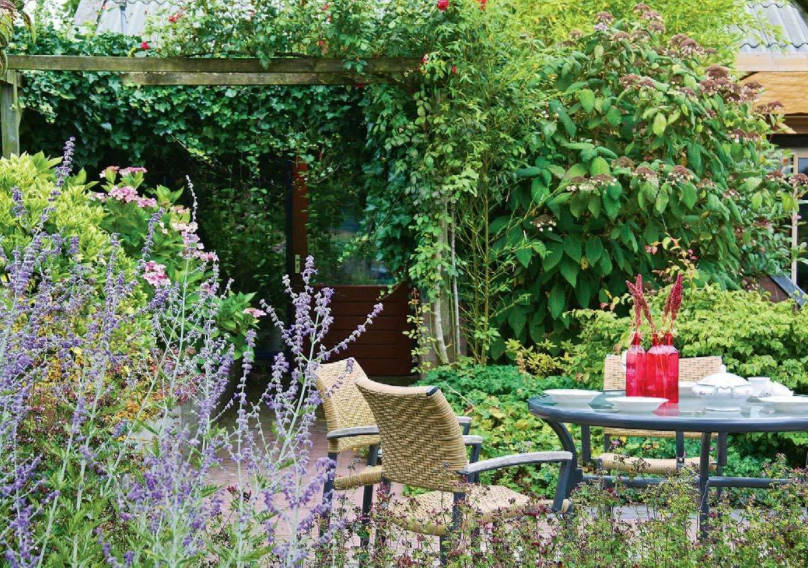
Joy for the eyes and soul, an aromatherapy corner, a home pharmacy — that’s not all that a small garden of medicinal plants can give on the plot of a country house. Although not all of them tolerate winter well, the list of hardy plants is quite large and does not limit landscape creativity. Spicy-aromatic plants are used to create landscapes that occupy several hectares of land, and on small areas.
Choose perennials
To create a garden of herbs on your site, it is not necessary to resort to the help of landscape designers. Anyone can do it. You can start by planting perennial plants that winter well: mint, melissa, catnip, oregano, thyme, hyssop, bee balm, lovage, fennel, tarragon, etc.

Pots with spicy aromatic plants planted in them allow you to create a garden even on a paved area.
Mint
Mint is a plant that can be found on almost every site. Most often gardeners grow peppermint, long-leaved, curly, garden, apple tree. Peppermint has the most pronounced medicinal properties. There are two forms of it – black and white. The plants have serrated leaves with a purple edge and reach a height of 80 cm (2.6 ft). Curly mint is distinguished by the absence of mint-menthol flavor. The height of the bush is 80-90 cm (2.6-2.95 ft). Mint delicate apple flavor, rounded and velvety leaves. It can be added not only to salads, soups, meat dishes, but also to a variety of drinks, homemade cakes.
Landscape designers really appreciate variegated mint for its decorative effect. However, if other types of mint can grow both in the sun and in shade and partial shade, then variegated – only in the sun, otherwise the variegated color of the leaves is lost.
Melissa officinalis
Melissa officinalis is a perennial aromatic herbaceous plant. It is often called lemon mint for the pleasant smell of lemon, which is felt most strongly if you rub the leaf. Dried grass also preserves the lemon flavor. It grows in one place for 3-4 years, and then it needs to be rejuvenated by dividing the bush. The height of the plant is 50-100 cm (1.6-3.3 ft). Flowering time is from the end of June to the end of August. Melissa is harvested before flowering, cutting off the top (1/3) the bush.
If mint or lemon balm leaves are mixed with sugar, add lemon juice and pour mineral water, you will get a delicious refreshing drink with natural flavors. It also serves as a useful infusion.
Catnip Of Fassina
Catnip bean is a favorite not only among gardeners, but also among cats who like to rub against the plant, sniffing it. It is not by chance that it has such a name. The height of catnip is 70-100 cm (2.3-3.3 ft), decorative and purple or purple flowers and grayish-blue leaves. Lemon catnip was especially appreciated. Timely removal of wilted flowers helps to prolong flowering (from June to August).
Monarda
Monarda (garden bergamot) is a plant with essential oil, decorative, medicinal and spicy taste. It grows well in the sun and in partial shade, requires frequent watering, but moderately. From cut flowers – bright red, pink, white, purple – you can make elegant bouquets. In addition, the monarda is an excellent dried flower. The height of the plant is from 35 cm/1.1 ft (dwarf forms) to 80 cm (2.6 ft).
Oregano
Oregano is a beautiful ornamental plant with a pleasant aroma, which is enhanced in sunny weather. Its height is 30-60 cm (1-1.96 ft), the flowers are pale lilac or pink, blooms from July to September. Flowers are collected all summer.
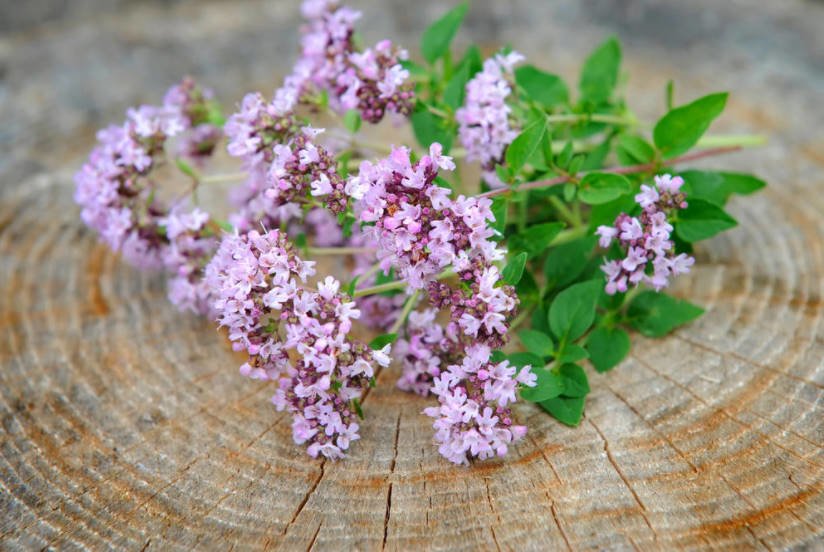
For planting oregano, both a sunny area and partial shade are suitable.
Thymus
Thymus has a delicious smell and a spicy, slightly bitter taste. The plant is light-loving, reaches a height of 20-40 cm (7.9-15.7 in). Blooms from May to August. If thyme bushes are regularly trimmed, they will be dense and compact. Do this in early spring or after flowering. Watering is necessary only during dry periods.
Hyssopus
Hyssop (St. John’s wort blue) is a semi-shrub plant up to 50 cm (1.6 ft) tall, a spicy seasoning and a real healer. Blooms twice in the summer with prickly inflorescences of blue color, has a pleasant aroma and tart taste.
From left to right: 1. Medicinal sage. Decoction of this plant is very good to treat an inflamed throat, using it for rinsing. 2. Hyssop pink. 3. Lovage (rich in potassium salts, vitamins, minerals, essential oils).
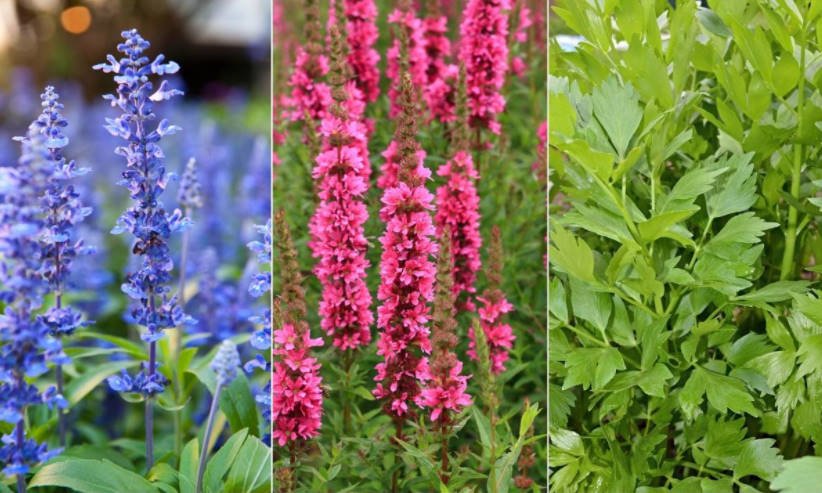
Fennel
Fennel is a perennial herbaceous plant with bluish-green split leaves and a strong smell of anise. The height of the plant is 120 cm (3.9 ft). The leaves are added to salads, soups, fish and vegetable dishes, and medicinal tea is prepared from the seeds.
Tarragon
Tarragon is well known to housewives engaged in pickling vegetables. It is also widely used in French cuisine, especially from poultry and fish. The height of the plant is 60 cm (1.96 ft). Tarragon leaves are torn throughout the summer, and flowering shoots should be cut off in time.
Lovage
Lovage is a medicinal and spicy plant about 100 cm (3.3 ft) high with beautiful pinnately dissected leaves. Blooms in June-July. Fresh leaves are put in salads, meat and poultry dishes.
The addition of a garden annual plants
The garden of perennial aromatic plants can be supplemented with annual basil or biennial curly parsley. Different varieties of basil are able to please not only gourmets, but also the gardener’s eye.
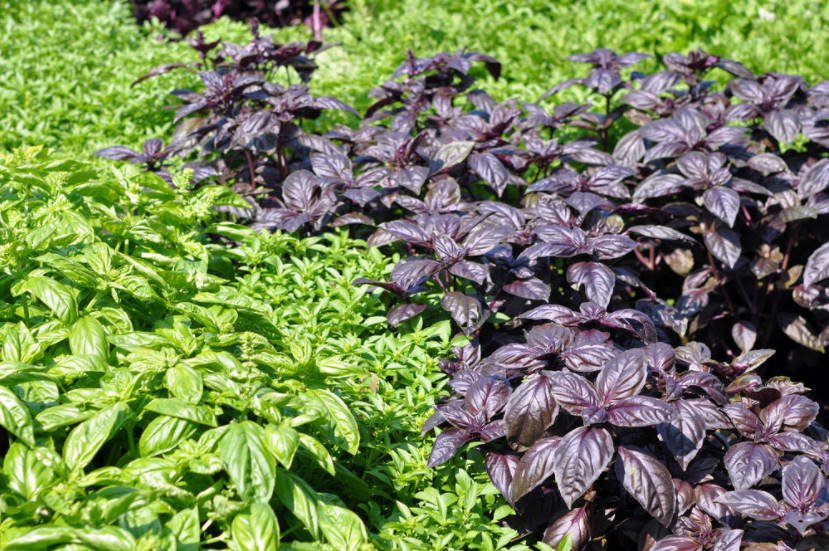
Basil is grown through seedlings, which are planted in the ground in early June. The height of the bush is 25 cm (9.8 in). If you want to harvest all summer, the tops of the stems should be cut off: the plant begins to bush and give young shoots. However, for a decorative effect, you can leave several plants untouched: in the overall composition of white flowers, greenish and pinkish-purple basil flowers look great.
A rather attractive basil carnation is a round bush 30 cm (11.8 in) high with small green leaves and white flowers. It has a light clove flavor and is considered one of the best precocious varieties. In autumn, bushes of any variety can be dug out and transplanted into a pot – they will grow all winter on a well-lit windowsill.
It is not difficult to grow curly parsley. Its seeds are sown directly into the soil in early spring. Because they are hard, they germinate slowly. Experts recommend soaking and germinating, otherwise seedlings will appear in 2-3 weeks. In the first year, the plant forms a rosette of leaves and root, in the second year it blooms. Curly parsley tolerates frosts worse than ordinary leafy. Therefore, in winter, the leaves should be cut off, cover the bed with 1-2 cm (0.4-0.8 in) of earth and cover.
Brothers in containers
You can supplement the composition with spicy-aromatic garden plants in containers, such as rosemary, sage, lavender, etc., which either do not tolerate frost, or freeze, even if covered. In summer, when creating a garden, you can bury pots with these plants in the ground, and in autumn bring them into a heated room.
Rosemary
Rosemary is an evergreen shrub with narrow leaves, with a strong, slightly sweet aroma, reminiscent of the smell of pine, and a spicy, slightly spicy taste. Crushed leaves in fresh form in small quantities are added to vegetable soups, salads, meat dishes, etc. Cut rosemary at a height of 60 cm (1.96 ft) from the ground.
Sage
Sage is a mandatory inhabitant of pharmacy gardens, but it also looks good as a background plant blooming with tall blue and purple inflorescences. The height of the plant is 40-70 cm (1.3-2.3 ft) . Most often, two varieties of sage are cultivated – medicinal and nutmeg. If sage is used both by leaves and inflorescences, then nutmeg is used only by inflorescences.
Lavender
Lavender is an evergreen semi – shrub up to 50 cm (1.6 ft) high . Its presence among the spicy-aromatic plants brings the charm of Provence to the composition. Lavender loves the sun and abundant watering (with good drainage). After flowering, the plant is cut, but not more than 1/3. If you cut lavender to dead stems, it may die.
Left: Lavender in containers. On the right: Thymus surrounded by veronica and yarrow.
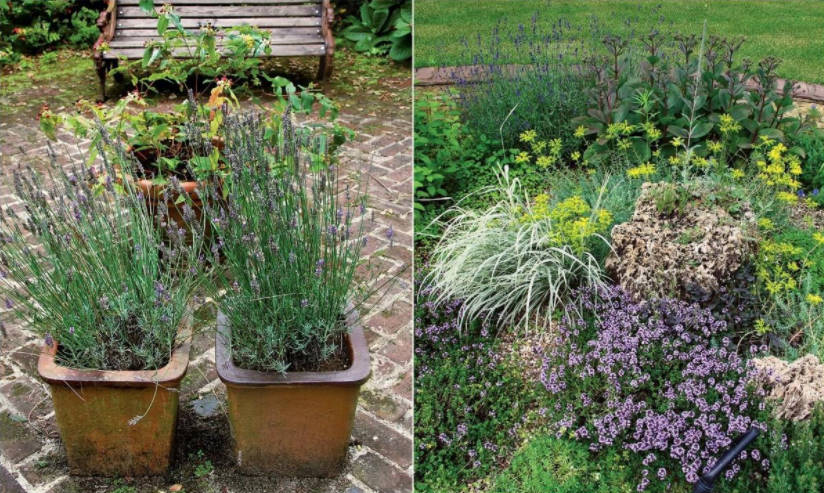
Basically, spicy-aromatic plants prefer sunny, sheltered places from the wind. The more sun they get, the more aromatic oils are released that determine their taste and smell. Only a few are able to feel comfortable in partial shade: mint, valerian, cuff, comfrey.
Paths, flower bed, rock garden
What shape can be given to the garden of aromatic herbs? It can be a flowerbed, rockery, rock garden, ethnic composition with fence, wheel, etc. you can create a separate collection of varieties of the same species, differing in the color of flowers and the shape of leaves. Or, on the contrary, to collect a collection of different plants, the flowers of which have the same color scheme, but differ in height, bush shape and inflorescences. Pruning will give the plants the desired geometry – a ball, a pyramid, etc.
The basis for combining plants into a container group can be based on a thematic principle – herbs of a blue-gray-purple scale, complemented by pink, are collected here.
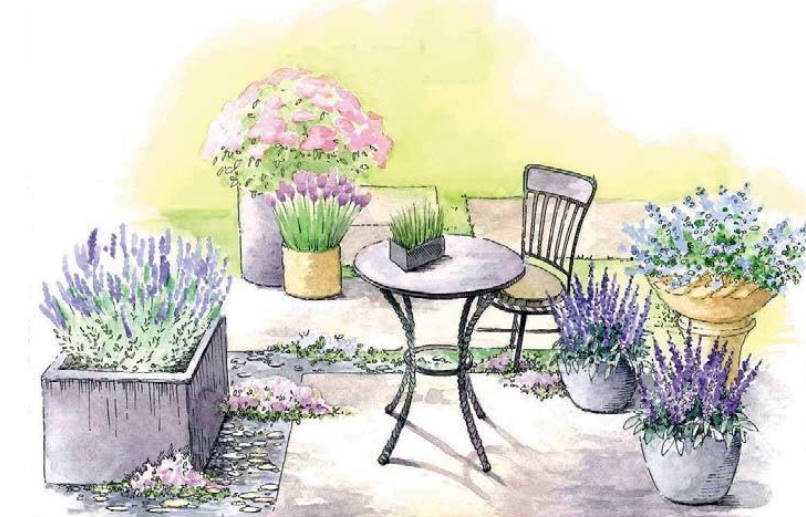
Planting rules the fragrant composition is no different from the traditional one:
- If it is a flowerbed, then in the center you can place the tallest plants (lovage, fennel, monarda), around – bushes 50-60 cm (1.6-1.96 ft) high, and on the edges – stunted or dwarf varieties. Choosing plants by color and shades, you can make any ornament out of them.
- When making a corner at a fence, gazebo or building, plant tall grass in the background, and lower grass in front.
- Creeping thyme is ideal for slides and dry streams. By the way, it can also be planted along the path as a curb.
All grasses require well-drained soil. When creating a garden, it is important to take into account the growth and growth rate of herbs. For example, if mint is not protected with boards to a depth of 25 cm (9.8 in), it will quickly spread over the site. Landscape design experts advise grouping varieties according to the amount of water and sunlight they need.
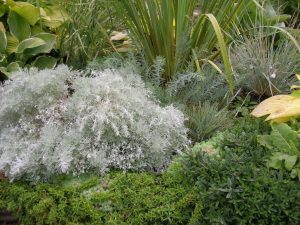
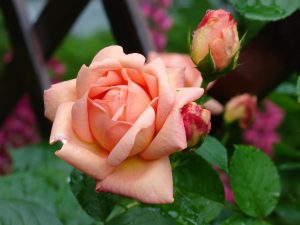
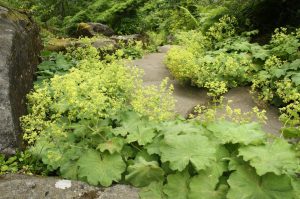
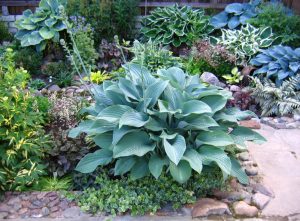
Leave a Reply